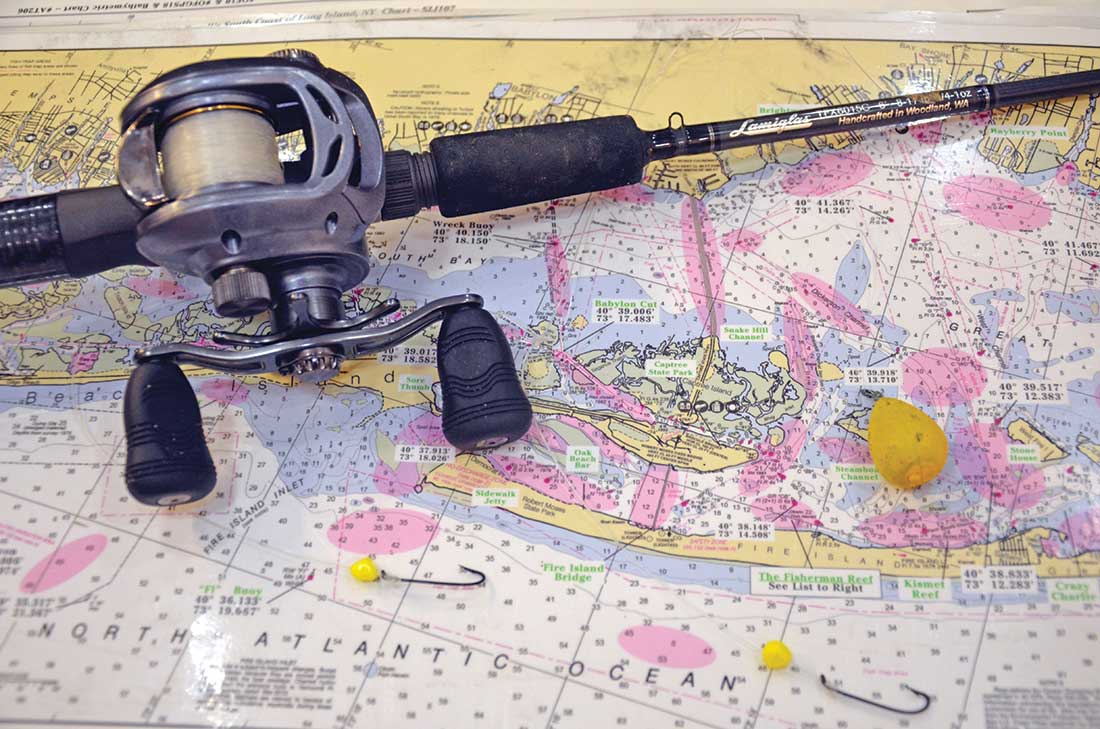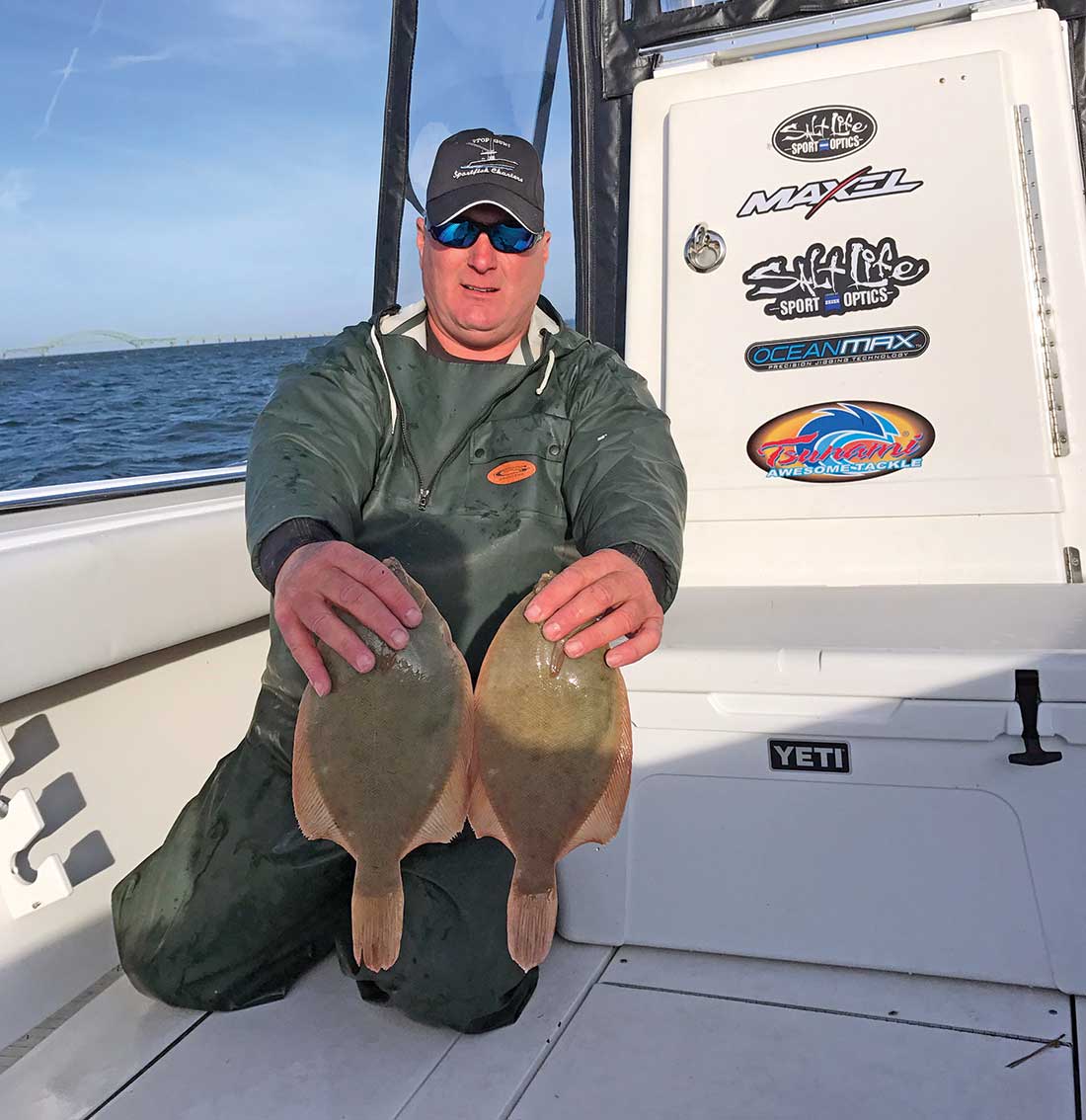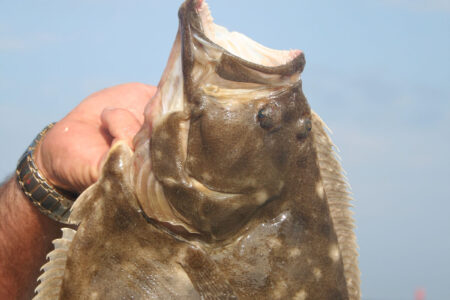
The appeal of still being able to come home with a few flounder still weighs strong on some anglers.
As we enter the spring of 2020 anglers are already gearing up for early season stripers and flounder, with fluke and porgies following close behind. Despite their numbers being down and a paltry bag limit of two fish, I still like to start my season off with a few trips for flounder. Yes, flounder – you know, that other flatfish that inhabits our South Shore bays and North Shore harbors and coves. Okay, we all know flounder are not as prominent as in years past, but if you are willing to make the effort, you could end up with a few delicious flounder fillets as soon as the April 1 season opener.
Flounder will put up a nice fight on the appropriate light tackle, which also bodes well for an early trip with youngsters. These early season trips however can be on the chilly side, so be sure you pick a day when the sun is shining for added comfort, and generally better results on the fishing side as the shallow bay waters will also warm to the sun’s rays.
Speaking of temperature, this past winter I stopped by Capt. Scott Leonard’s (Top Gun Sportfish Charters) house for a tutorial on winter flounder. If you follow fishing reports, the web or FB, then you have probably seen his flounder catches, which are pretty steady every spring. Capt. Scott takes time every year to ply the waters of Great South Bay for flounder as soon as the season opens.

Temperature and Tides
According to Capt. Scott, water temperature is the key to success. Yes I know, we used to catch them in the dead of winter when waters were in the 40s and even lower, but in today’s fishery, the best temp is going to be at the 50-degree mark. You can catch fish when it’s in the lower 40s, but you will work a lot harder for them.
In Great South Bay, the 50-degree mark usually hits near April 15, but a milder winter such as we experienced this year could accelerate the start of good fishing. Scott commented that you want to fish the outgoing water in the spring. The ocean water is much colder than the bay, so the outgoing, flush with warmer bay water is the time focus your effort. In fact, the top of the flood could be as cold as 45, whereas from the middle of the out to the end could see temperatures as warm as 50 or more degrees. Scott also feels that the difference in the early stages of the season could be as little as one or two degrees, but can still trigger a bite.
Where-to
We all have our secret hotspots to catch whatever species we are targeting and most times they can be as secretive as the final resting place of Jimmy Hoffa! I was able to tempt Scott into giving up one of his favorite spots, but one I am sure many anglers already know about. Scott feels that the area where West and Dickerson channels meet is one of the better locations for early season flounder action. On the outgoing, the area will combine warmer waters from the west and north side of the bay which could lead to a couple of degree warmer water than other areas.
There are other areas within Great South Bay that also produce well. Snake Hill Channel always seems to produce a few fish for the cooler. Another well-known location, especially during the latter part of May is the Sore Thumb Pocket. Flounder junkies always seem to score here as the season is winding down. The State Channel just west of the old Frank and Dicks offers a cove with dark mud that heats up at low tide and can be productive on an outgoing tide.
Any location, as mentioned earlier, is dependent on water temperature, so when you go exploring for areas to drop your anchor, check your electronics and see what the temperature is. If you find an area that is even a couple of degrees warmer than others, drop anchor, chum it up and see what happens.

Bait & Tackle
I have always said that flounder are probably the most expensive fish to target, and I will not shy away from that statement. If an angler heads out for fluke, he can get away with a bucktail and bag of spearing or Gulp. Want some bluefish, grab a few bunker and chunk away. Blackfish, sea bass and porgies also require a minimal outlay for bait. When it comes to flounder, an assortment of baits is often necessary since one day they might want worms, another clams and yet another, mussels. And don’t forget the chum – a prerequisite to any flounder trip these days. Throw in rigs with colored sinkers, beads, small grub tails and maybe even a few glow lights, and you are looking at a tidy little investment. Last year, on one outing, Capt. Scott and Capt. Al Lorenzetti went out with a flat of sands, chum logs, bags of mussels and clams and returned to the dock with nothing to show for their efforts. So keep in mind, your outlay in baits and chum may far outweigh your catch some days, but then again, the appeal of still being able to come home with a few flounder still weighs strong on some anglers.
In the early spring, Capt. Scott feels you need two baits – “big” sandworms and clams. He also added you need ground up clam chum for the chum pot and mussels to crack and throw over as well. On the bait end, don’t get cheap, use a whole, fat sandworm on the hook. Most anglers will use a two-hook rig with different baits. The captain also likes one bait per hook as opposed to doubling up a piece of clam and sandworm on a single hook. If you want to use two baits, use two hooks and bait them separately.
For the rig, keep it simple. A basic rig should consist of a Fin Strike or similar 905 C with yellow corn beads in size 9. Add in a dipsey style sinker – always painted yellow, and you should be all set.
Both spinning and baitcasting outfits will suffice for flounder. Capt. Scott prefers a light action Lamiglas rod fitted with a small Daiwa baitcaster. Personally, I prefer a light action spinning rod in the 6-foot range rated for 6- to 12-pound test matched to a Shimano Stradic reel spooled with 10-pound test braid.
Flounder season runs from April 1 through May 30 with a 12-inch minimum size limit and two fish bag. If the water temperatures are right, then flounder should be biting. Move around, watch your temperature gauge, chum, crack some mussels and you should be on your way to a flounder dinner.




